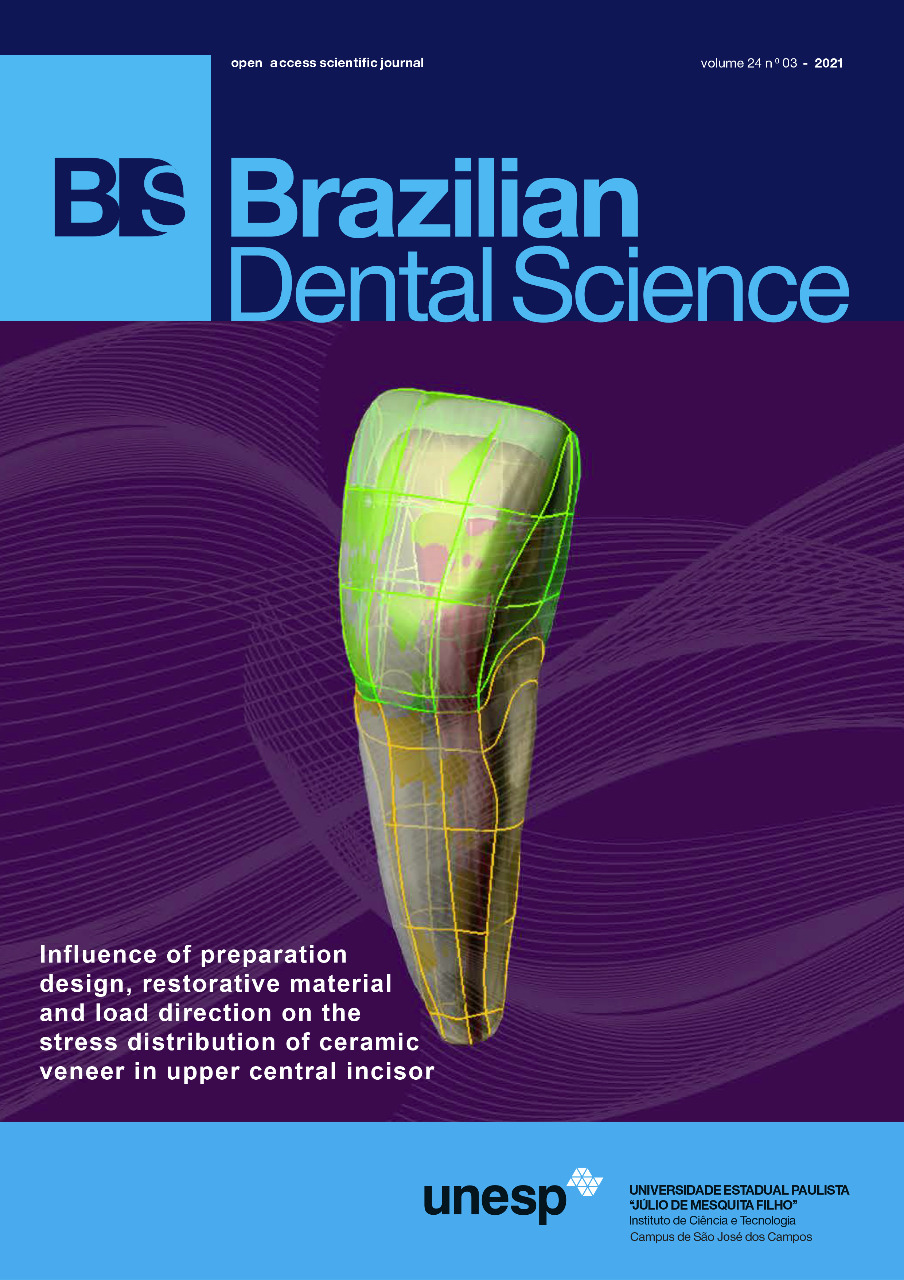Patient Satisfaction and Pink Esthetics of PEEK Versus Zirconium Abutments in the Esthetic Zone (A Randomized Controlled Trial)
DOI:
https://doi.org/10.14295/bds.2021.v24i3.2509Abstract
Objective: This study was performed to evaluate the use of PEEK abutments versus zirconium abutments with lithium disilicate superstructure on the esthetic acceptance and peri-implant clinical parameters. Zirconium abutments were found to have high surface roughness even after polishing. This causes a remarkable collapse of the soft tissue papilla that is a primary factor in the Pink Esthetic Score(PES), resulting in failed esthetic restoration in the anterior esthetic zone. Material and Methods: Twenty patients who needed a single implant restoration in the esthetic zone were included in this study. Eighteen patients completed screening, baseline, three-month, six-month, and twelve-month follow-up visits. At the screening visit, the patients were randomly allocated into two groups: Zirconia abutments (A) Group, and PEEK abutments (B) Group, both of which were restored with IPS e.max CAD superstructure. Patients Satisfaction was assessed by visual analogue scale (VAS). Pink esthetics score (PES), modified plaque index (mPI) and modified gingval index (mGI) were also assessed. Results: All implants were successfully osseo-integrated with a 100% survival rate over one year. Patient satisfaction was significantly higher for the PEEK group than the zirconium group. The pink esthetic score showed no statistical significance between both groups. The modified plaque index was significantly lower for the PEEK group than the zirconium group. The modified gingival index showed no statistical difference between both groups. Conclusion: PEEK revealed to be a versatile material to replace zirconium for implant abutments, due to its lower plaque affinity and higher patient satisfaction.
Keywords
Dental implantation; Patient satisfaction; PEEK abutments; Pink esthetic score (PES); Zirconium abutments.
Downloads
Downloads
Published
Versions
- 2021-07-01 (2)
- 2021-07-01 (1)
How to Cite
Issue
Section
License
Brazilian Dental Science uses the Creative Commons (CC-BY 4.0) license, thus preserving the integrity of articles in an open access environment. The journal allows the author to retain publishing rights without restrictions.
=================




























